This post will answer the question, is stainless steel cookware safe? It will review the safety of stainless steel cookware, how to properly care for stainless steel, and why it's safer than non-stick cookware.
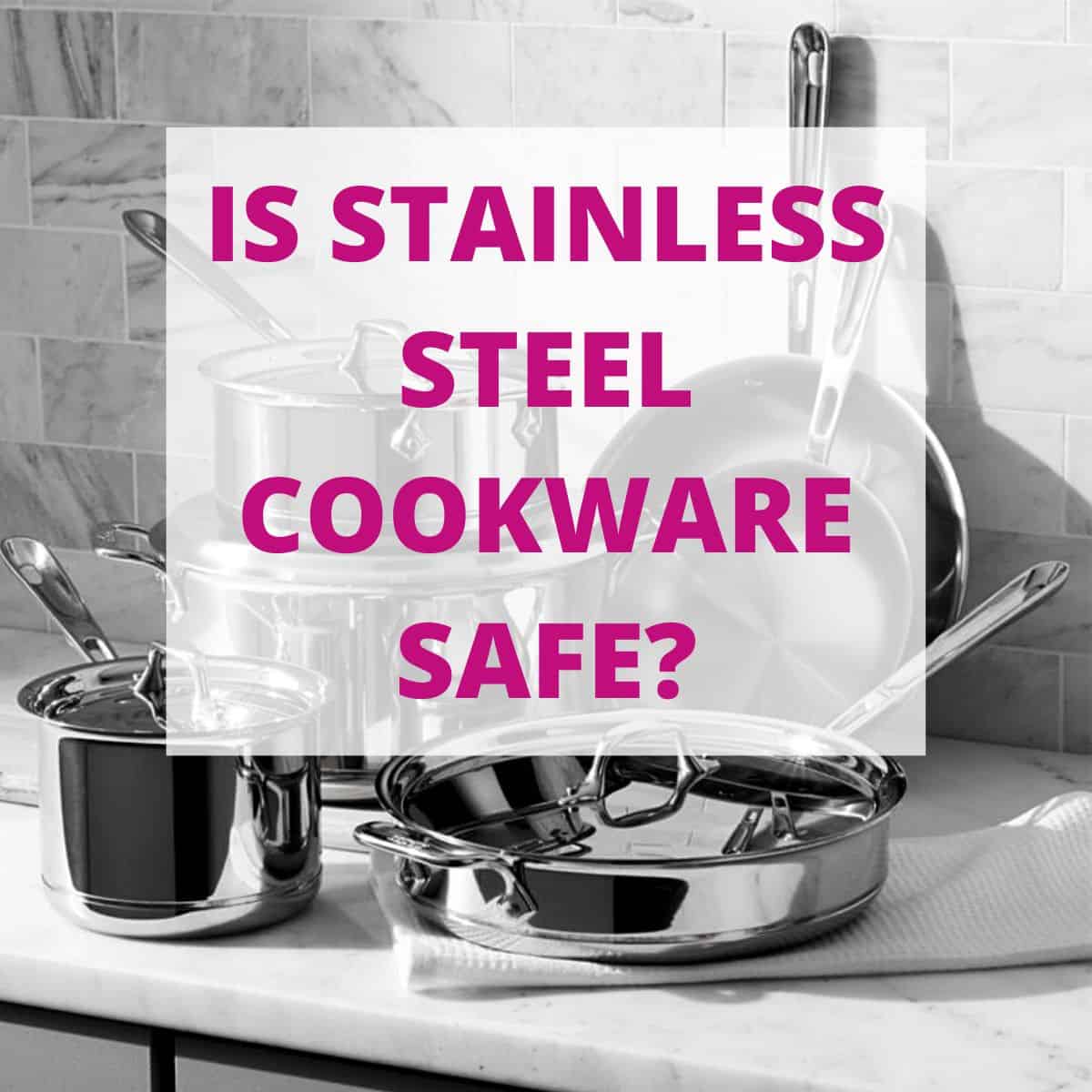
Disclaimer: Some of the links in this post are affiliate links whereby if you purchase the product through that link I make a small commission. This does not cost you anything extra and allows me to keep this website running.
As a physician, and someone who has dealt with chronic illness, I think we should be doing more to help prevent diseases, and when it comes to items in your home, choosing safe cookware is one of the ways to help decrease your exposure to potentially harmful ingredients. Unfortunately, when it comes to cookware there is a lot of false advertising, and many brands will advertise their cookware as non-toxic, when it isn't. So in this article I will review whether stainless steel cookware is a safe cookware option, and why you should be avoiding non-stick cookware.
Table of Contents
- Why avoid non-stick cookware:
- Is stainless steel cookware safe?
- How to care for stainless steel cookware:
- Disadvantages of stainless steel cookware:
- Safe stainless steel cookware options:
- Other safe cookware options:
- The bottom line:
- Frequently asked questions:
- Other health information you will want to read:
- Our expertise:
Why avoid non-stick cookware:
Before I discuss stainless steel cookware, I want to review the issues with non-stick cookware and why you want to avoid it.
Non-stick coatings and Teflon coatings are made with per- and polyfluoroalkyl substances (PFAS). PFAS chemicals are also known as “forever chemicals” because they last a very long time. These chemicals are bad for human health and the environment because they build up and don’t go away. They resist breakdown and they remain in our bodies for years, and sometimes even decades after exposure.
The original PFAS chemicals (like Teflon) are known as “long-chain” because they have a long carbon and fluorine chain. Today, the production of the long carbon chain chemicals like PFOA and PFOS have been largely phased out. There are now new PFAS chemicals being used that are referred to as “small-chain” because they have a shorter carbon-fluorine chain. The problem with this new class of small chain chemicals is their small size which makes them even more persistent in the environment and even more difficult to clean up.
We get exposed to PFAS through many different means including through our cookware, drinking water, personal care products (such as makeup), period underwear, clothing, and air. And unfortunately, most of us have high levels of PFOA in our systems, with more than 99% of the United States population having PFOA in their blood when tested.
PFAS, even at low doses can be dangerous to health and have many potential health effects including but not limited to:
- They are endocrine disruptors or hormone disruptors and can cause weight gain and diabetes.
- Can increase the chances of miscarriages and can lower sperm counts.
- Increase the risk of allergies and asthma in children.
- Increase the risks of certain cancers including thyroid and kidney cancer.
- They increase cholesterol levels and can contribute to heart disease.
- Can cause thyroid disease.
This is why I recommend avoiding non-stick cookware and bakeware. The potential health risks of PFAS chemicals are just too high.
In recent years ceramic coated non-stick cookware has become very popular and is often marketed as safer than traditional non-stick cookware like Teflon, but unfortunately ceramic coated cookware can also have health risks.
Is stainless steel cookware safe?
For the most part, stainless steel is a safe cookware choice.
Just be aware that stainless steel cookware does release low levels of nickel and chromium (these are both heavy metals), especially if you are cooking acidic foods like tomatoes or tomato sauce. For most people the release of these low levels of nickel and chromium should not be major concern, but for those with nickel sensitivities or allergies, or chromium sensitivities or allergies, these exposures will be an issue.
The amount of heavy metal leaching from stainless steel cookware will vary depending on the quality of stainless steel, the stainless steel grade, the cook times, how the cookware is used, and how it is cared for, so I recommend using high-quality, stainless steel cookware, and it’s even better if it’s nickel-free.
As well, damaged stainless steel pots and pans will release higher levels of heavy metals, so they should be discarded to decrease your heavy metal exposure. You can get help prevent your stainless steel cookware from getting damaged by caring for it properly.
Another thing to be aware of with stainless steel cookware is that some brands use nanoparticles when making their cookware. Unfortunately more and more studies are showing that nanoparticles can have health risks including but not limited to DNA damage, increasing inflammation, causing respiratory problems, neurological problems, alter the gut microbiome, impact the endocrine system, decrease fertility, and increase the risk of certain cancers.
Now when it comes to nanoparticles in cookware and their impact on health, this has not yet been well studied. However, as a precaution I recommend trying to avoid cookware made with nanoparticles if possible. When it comes to stainless steel cookware look for the term "NanoBond" and avoid this type of stainless steel cookware.
How to care for stainless steel cookware:
To help prevent your stainless steel cookware from becoming damaged it's important to care for it properly. When using cooking utensils, choose those made from materials that won't scratch the surface such as silicone or wood (avoid plastic utensils as they will release hormone disruptors into your food). You should also be gentle when cleaning your stainless steel cookware so that the surfaces don't get damaged.
Disadvantages of stainless steel cookware:
Because stainless steel cookware doesn't have a nonstick surface it can take a bit of practice to learn how to use it properly so that your food doesn't stick to it.
To prevent food from sticking to stainless steel cookware here are a few tips:
- Put a few drops of water onto the cookware when it's on high heat. If the drops crackle and slide, it means it is at the proper temperature. You can then lower the heat and add your food to the cookware.
- Cooking over low heat will help prevent food from sticking to stainless steel.
- Adding a fat or oil to the cookware such as coconut oil, butter, or olive oil will also help prevent food from sticking to it.
Stainless steel cookware is also fairly heavy which can make it harder to handle compared to other types of cookware (especially for kids) and the handles can get hot when cooking so I recommend using an oven mitt to grab the handles.
Safe stainless steel cookware options:
Here are a few of the stainless steel cookware items that I recommend. And if you are shopping for other stainless steel cookware items beyond what is in this list, remember to avoid any stainless steel with non-stick surfaces or that are made with nanoparticles.
All-Clad Cookware
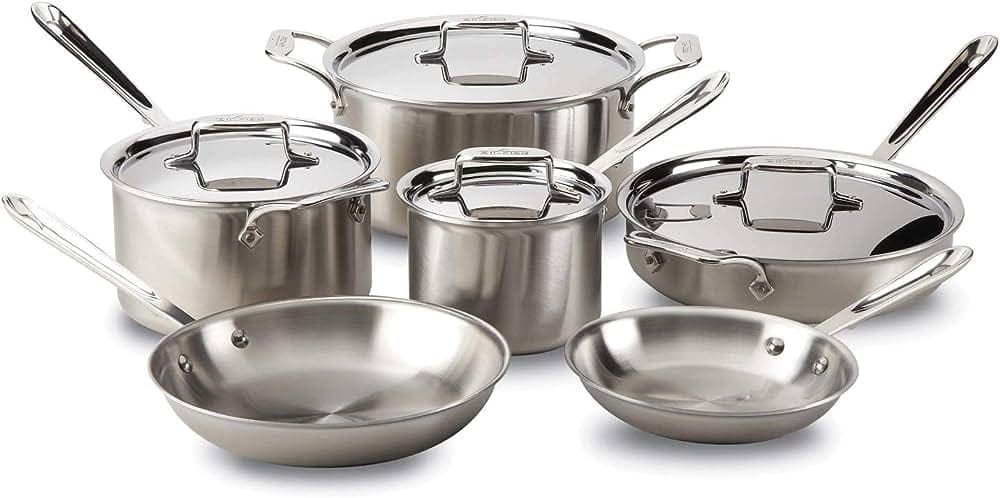
All Clad is one of the better known brands of stainless steel cookware and this is the stainless steel cookware that I have. It's a high quality type of stainless steel and I have had my pots and pans for years and not only do they work really well but they still look brand new.
Cuisinart Multiclad Pro Cookware
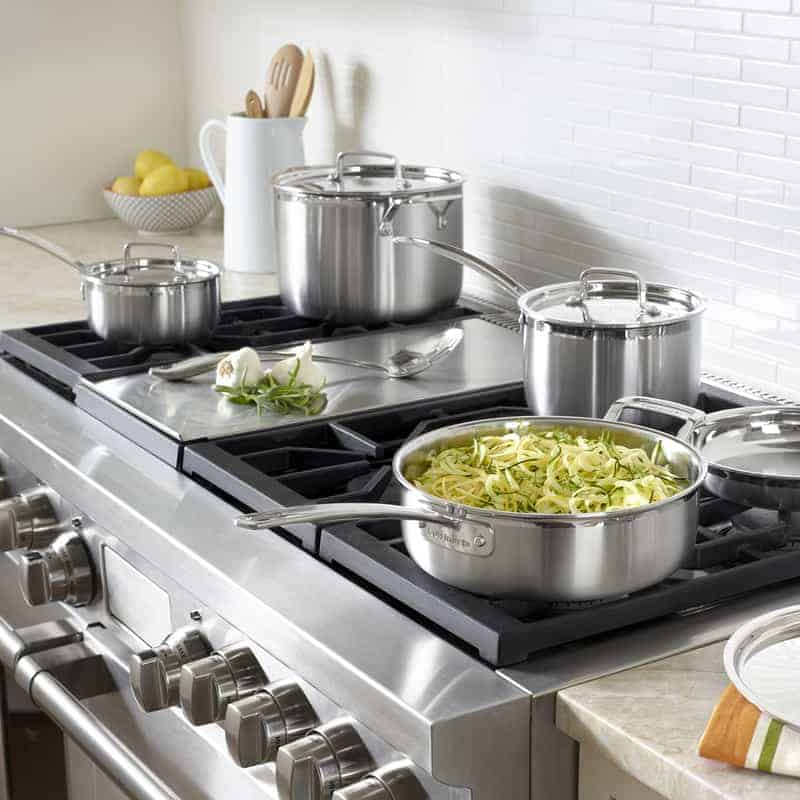
If you are looking for a more affordable stainless steel cookware option, Cuisinart Multiclad Pro is a great choice. It is made of fewer layers compared to some other types of stainless steel cookware, so it won't be as durable, but this is also what makes it more affordable.
Heritage Steel Cookware
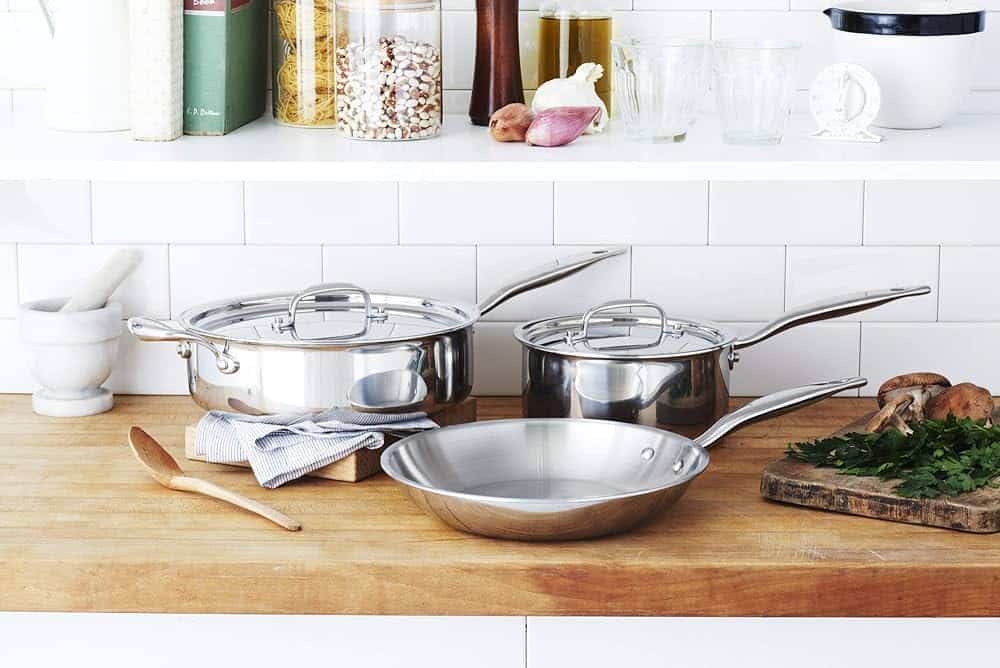
If you are looking for an even higher quality and more durable type of stainless steel cookware, Heritage Steel stainless steel cookware is a great investment. It also contains titanium which makes it more corrosion resistant and the molybdenum and titanium they add makes it more resistant to metal leaching compared to typical stainless steel. In other words, this makes this cookware even safer!
All-Clad Copper Core Cookware

Stainless steel lined copper cookware is safe because the copper doesn’t actually touch the food, and the copper core helps the cookware heat up faster. Just note that copper lined stainless steel cookware is more expensive than traditional stainless steel, but because of the faster heating, some people prefer this type of cookware.
Other safe cookware options:
If you are looking for other safe cookware options beyond stainless steel here are some other great, non-toxic and safe options for you.
Cast iron cookware:
Cast iron is one of the most durable types of cookware and one of the most affordable. It is especially great for searing meat. There is a bit of a learning curve with using cast iron skillets but once you get the hang of cooking with them they are actually really easy to use. I have a couple Lodge Cast Iron skillets that I use and love.
Carbon steel cookware:
Carbon steel is similar to cast iron, but is lighter in weight and a bit easier to handle. It is also very durable and more affordable than stainless steel and should last a lifetime.
Pure ceramic cookware:
They key is pure ceramic. Most ceramic cookware on the market is actually ceramic coated, and the coatings are not pure ceramic. These are often advertised as a safer alternative to more traditional non-stick pots and pans but these ceramic coatings can also be made with potentially harmful materials. I have written an entire post about the risks of ceramic coated cookware which I highly recommend reading.
The bottom line:
The good news is that stainless steel is a safe type of cookware as long as you choose a high grade of stainless steel, avoid stainless steel made with nanoparticles and care for it properly. Compared to nonstick cookware it is a safer, healthier option.
Frequently asked questions:
As I discuss in my article, How To Choose Safe Cookware there are a few different options that are safe for your health including:
Cast iron and carbon steel
Pure ceramic
High quality stainless steel
It is safe to cook all types of food in stainless steel. Just be aware that acidic foods will release a little more nickel and chromium into the food when you cook it in stainless steel (and as discussed above, for most people this should not be a concern).
For health reasons it is safer to cook with stainless steel cookware rather than nonstick cookware.
Other health information you will want to read:
Our expertise:
Dr. Erin Carter, MD, FRCPC, is a physician with board certifications in internal medicine and rheumatology. She is passionate about nutrition, environmental health and low toxicity living and has been doing research and publishing information in this area for years.

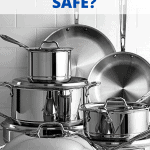

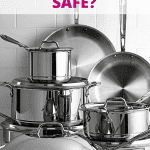
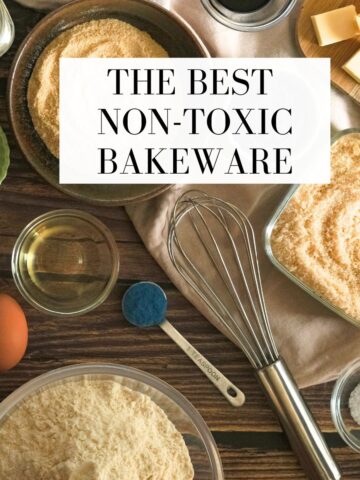
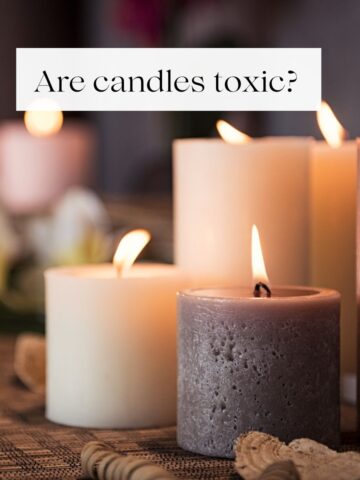
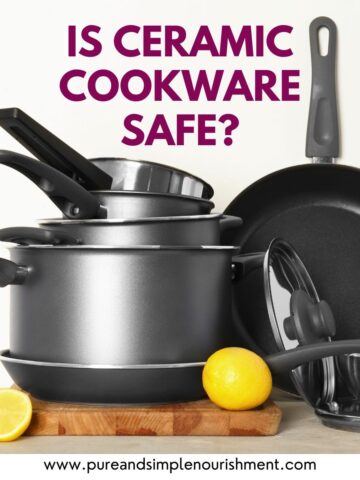
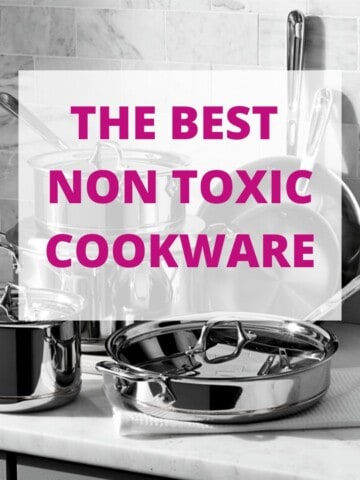
Leave a Reply